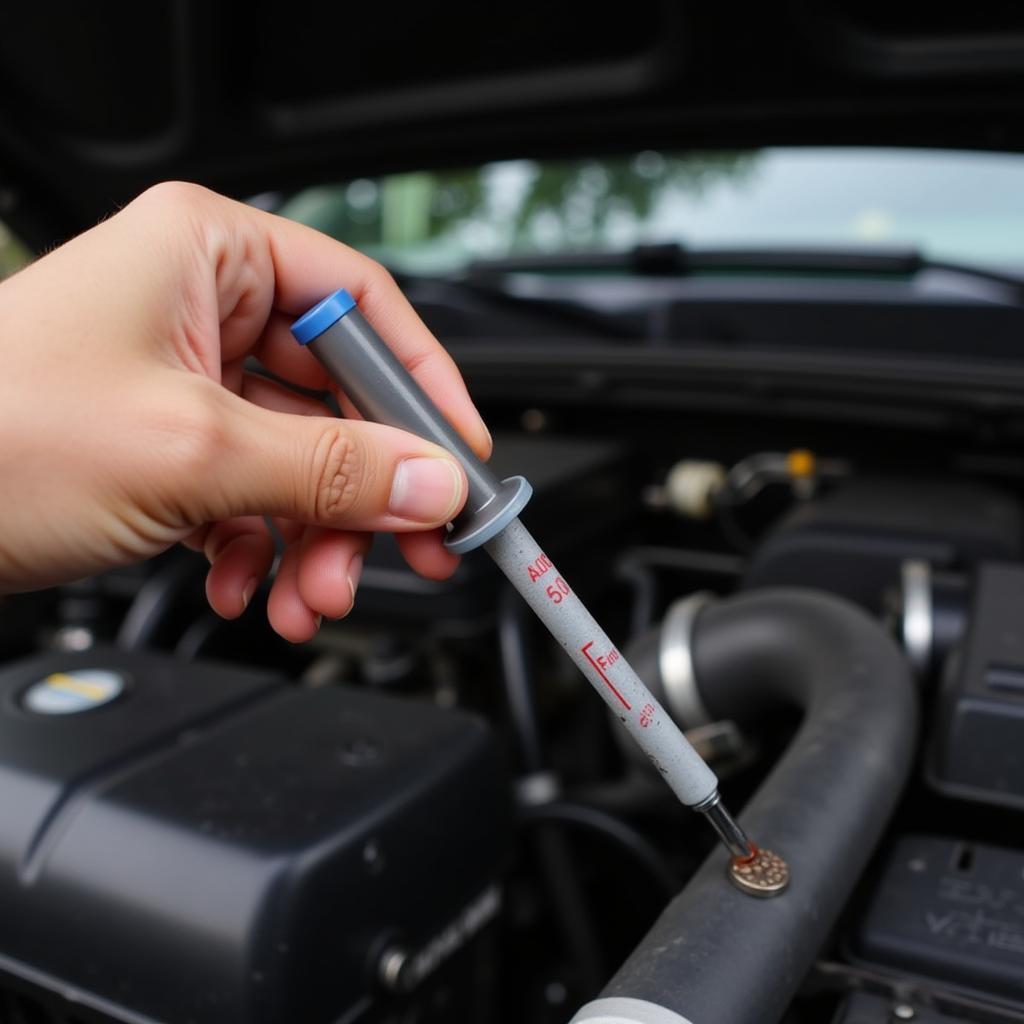A dead battery is often the first suspect when your car won’t start, but a faulty alternator can be the underlying cause. If your car won’t start and you suspect an alternator problem, this guide will help you diagnose and troubleshoot the issue. alternator problems car won’
Is a Faulty Alternator Preventing My Car From Starting?
A car’s electrical system relies on the alternator to charge the battery and power various components. A malfunctioning alternator won’t charge the battery properly, eventually leading to a dead battery and a car that won’t start. There are several telltale signs that point to a failing alternator.
Common Symptoms of a Bad Alternator
- Dim or flickering headlights: A weak alternator struggles to provide enough power, resulting in dim or flickering lights.
- Dashboard warning light: The battery or charging system warning light on your dashboard is a clear indicator of a potential alternator problem.
- Strange noises: Whining or grinding noises coming from the engine compartment can be a sign of worn-out alternator bearings.
- Electrical issues: Problems with power windows, radio, or other electrical accessories can indicate a failing alternator.
- Dead battery: While a dead battery can have various causes, a bad alternator is a common culprit.
How to Test Your Alternator
Testing your alternator can confirm whether it’s the source of your car starting problems. Here’s a step-by-step guide:
- Visual inspection: Check the alternator belt for cracks, fraying, or looseness. A damaged or loose belt can prevent the alternator from functioning correctly.
- Battery voltage test: Use a multimeter to check the battery voltage. A fully charged battery should read around 12.6 volts.
- Running voltage test: Start the car and check the battery voltage again. A functioning alternator should charge the battery, raising the voltage to around 14-14.8 volts.
- Load test: With the engine running, turn on the headlights, radio, and other electrical accessories. The voltage should remain within the 13-14 volt range. A significant drop indicates a weak alternator.
alternator problem car won t start
“A simple voltage test can save you time and money. Before replacing any parts, always diagnose the problem thoroughly,” advises John Miller, a seasoned automotive electrical technician.
What to Do if Your Alternator is Bad
If your tests confirm a faulty alternator, you have a few options:
- DIY replacement: If you’re mechanically inclined, you can replace the alternator yourself. However, it can be a challenging job, especially on newer cars.
- Professional repair: Taking your car to a qualified mechanic is the easiest and often the best option. They have the tools and expertise to diagnose and repair the problem quickly and efficiently.
how to diagnose car problems when its not starting
“Don’t underestimate the importance of a properly functioning alternator. It’s the heart of your car’s electrical system,” says Maria Sanchez, an automotive engineer with over 20 years of experience.
Preventing Future Alternator Problems
Regular maintenance can help prevent future alternator problems:
- Regular inspections: Have your alternator checked during routine maintenance.
- Belt maintenance: Ensure the alternator belt is in good condition and properly tensioned.
- Avoid electrical overload: Don’t run excessive electrical accessories with the engine off.
what could be the problem if the car doesn’t start
Conclusion
If your car won’t start and you suspect an alternator problem, following the steps outlined in this guide can help you diagnose and resolve the issue. Remember to test your alternator thoroughly before replacing it. Regular maintenance and inspections can prevent future alternator problems and ensure your car starts reliably every time. Contact us at AutoTipPro at +1 (641) 206-8880 or visit our office at 500 N St Mary’s St, San Antonio, TX 78205, United States for any assistance.






Leave a Reply